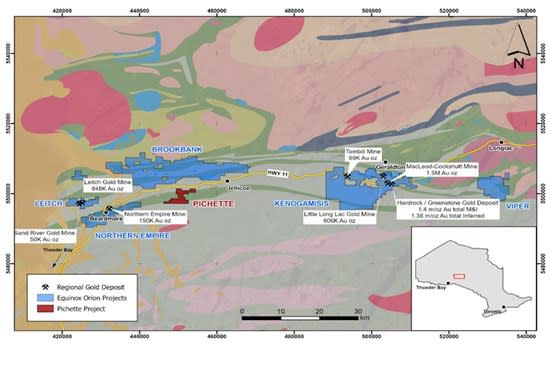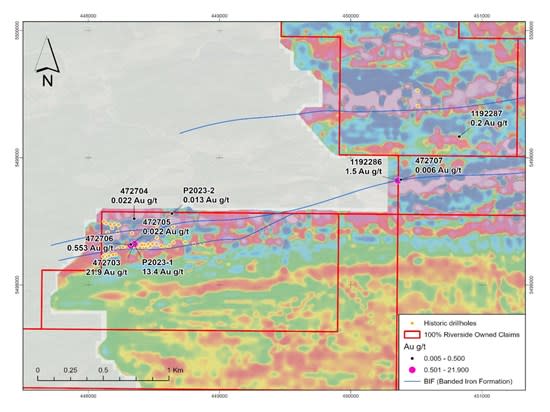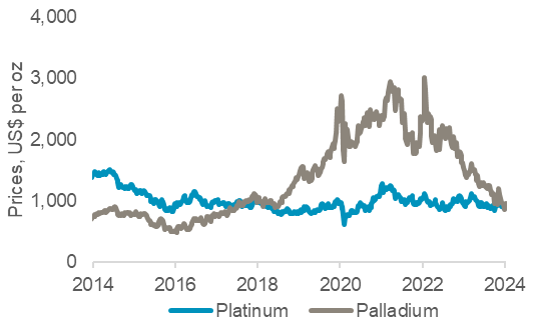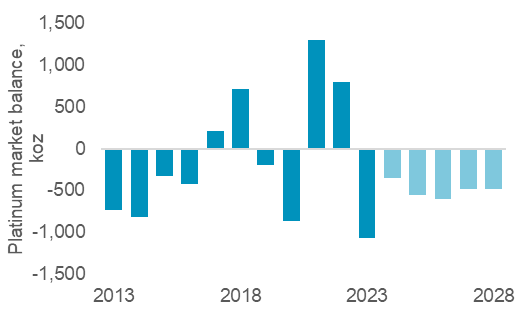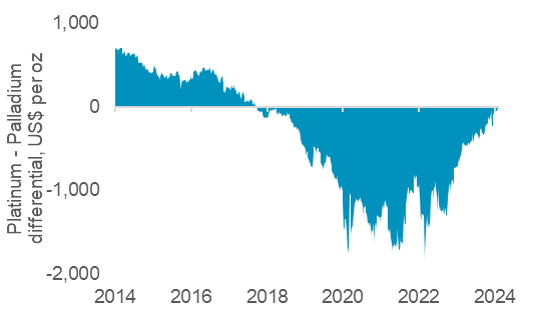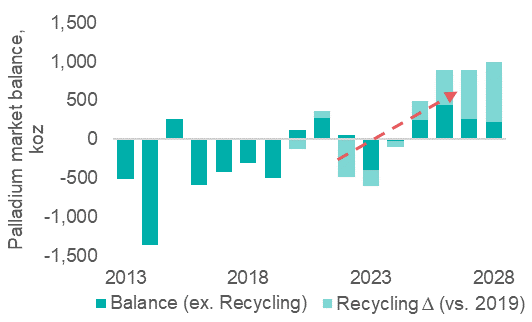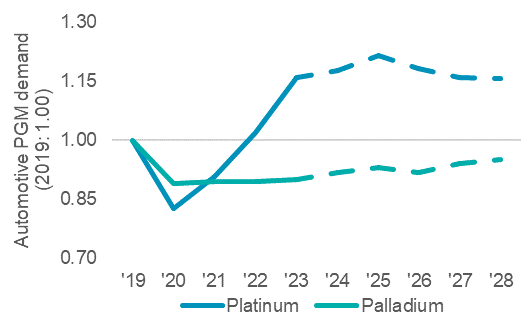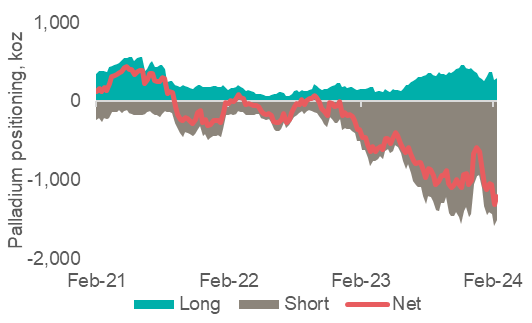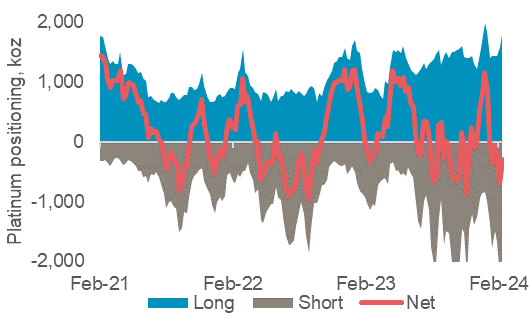Vancouver, British Columbia–(Newsfile Corp. – February 29, 2024) – EMX Royalty Corporation (NYSE American: EMX) (TSXV: EMX) (FSE: 6E9) (the “Company” or “EMX”) is pleased to announce preliminary, unaudited, fourth quarter and annual revenue for the year ended December 31, 2023 (all figures in U.S. dollars).
Annual Results
The Company earned preliminary revenue and other income and adjusted revenue and other income1 of $26,621,000 and $37,028,000, respectively, for the year ended December 31, 2023 (2022 – $18,277,000 and $25,397,000, respectively), which represented a 46% and 46% increase, respectively, in comparison to the prior year. The significant increase is due to the commencement of royalty payments from the Timok Royalty Property, which resulted in $8,632,000 in royalty revenue in 2023, as well as an 80% increase in royalty revenue from Gediktepe and 46% increase in attributed royalty revenue from Caserones. In 2023, the Company recognized revenue from the Timok Royalty Property that was partially related to 2021 and 2022 sales. The portion attributed to Timok production in 2021 and 2022 amounted to $4,790,000.
Fourth Quarter Results
The Company earned preliminary revenue and other income and adjusted revenue and other income1 of $7,546,000 and $10,921,000, respectively, for the three months ended December 31, 2023 (2022 – $2,288,000 and $3,535,000, respectively), which represented a 230% and 209% increase, respectively, in comparison to Q4 2022.
“2023 was an unprecedented year for EMX. We achieved record revenues with the commencement of royalty payments from our flagship Timok Royalty Property combined with solid growth from our stable of quality cash flowing royalties,” commented Dave Cole, CEO. “We expect to continue to grow the Company in 2024 and continue to deliver shareholder value through our royalty generation business model.”
2024 Guidance
The Company is expected to file financial statements for the year ended December 31, 2023 before the end of Q1 2024. As part of this filing the Company anticipates providing revenue guidance for 2024.
Caserones Update
In January 2024, EMX acquired an additional 2.737% ownership in the underlying Caserones royalty holder, Sociedad Legal Minera California Una de la Sierra Peña Negra (“SLM California”), for cash consideration of $4,742,000 pursuant to an agreement with Franco Nevada Corporation. The acquisition provides EMX with a further 0.0531% (effective) net smelter royalty (“NSR”) interest in the Caserones property, increasing the Company’s NSR royalty interest to 0.8306%.
About EMX – EMX is a precious, and base metals royalty company. EMX’s investors are provided with discovery, development, and commodity price optionality, while limiting exposure to risks inherent to operating companies. The Company’s common shares are listed on the NYSE American Exchange and TSX Venture Exchange under the symbol “EMX”. Please see www.EMXroyalty.com for more information.
For further information contact:
David M. Cole
President and CEO
Phone: (303) 973-8585
Dave@EMXroyalty.com
Scott Close
Director of Investor Relations
Phone: (303) 973-8585
SClose@EMXroyalty.com
Isabel Belger
Investor Relations (Europe)
Phone: +49 178 4909039
IBelger@EMXroyalty.com
Neither the TSX Venture Exchange nor its Regulation Services Provider (as that term is defined in policies of the TSX Venture Exchange) accepts responsibility for the adequacy or accuracy of this release.
Note 1
Reconciliation of Non-IFRS Measures
This news release contains certain financial performance measures that are not recognized or defined under IFRS (termed “non-IFRS measures”). As a result, this data may not be comparable to data presented by other issuers. For an explanation of these measures to related comparable financial information presented in the Financial Statements of the Company prepared in accordance with IFRS, refer to the discussion below. The Company believes that these non-IFRS measures are useful indicators of operating performance and are specifically used by management to assess the financial and operational performance of the Company. Accordingly, these non-IFRS measures are intended to provide additional information and should not be considered in isolation or as a substitute for measures of performance prepared in accordance with IFRS.
Adjusted Revenue and Other Income
“Adjusted revenue and other income” is a non-IFRS financial measure, which is defined by EMX by taking total revenue and adding the Company’s share of royalty revenue related to the Company’s interest in SLM California. SLM California is the royalty holder of Caserones. The Company presents this non-IFRS measure as it believes that certain investors use this information to evaluate the Company’s performance and ability to generate cash flow in comparison to other royalty companies in the precious metals mining industry.
The following table reconciles “adjusted revenue and other income” to revenue and other income, the most directly comparable IFRS measure:
| For the three months ended December 31, | For the year ended December 31, | |||||||||||
| (In thousands of US dollars) | 2023 | 2022 | 2023 | 2022 | ||||||||
| Total revenue and other income | $ | 7,546 | $ | 2,288 | $ | 26,621 | $ | 18,277 | ||||
| SLM California royalty revenue | 8,438 | 3,308 | 26,024 | 18,887 | ||||||||
| The Company’s ownership % | 40.0 | 37.7 | 40.0 | 37.7 | ||||||||
| The Company’s share of royalty revenue in Caserones | $ | 3,375 | $ | 1,247 | $ | 10,407 | $ | 7,120 | ||||
| Adjusted revenue and other income | $ | 10,921 | $ | 3,535 | $ | 37,028 | $ | 25,397 | ||||
Forward-Looking Statements
This news release may contain “forward looking statements” that reflect the Company’s current expectations and projections about its future results. These forward-looking statements may include statements regarding the future price of copper, gold and other metals, the estimation of mineral reserves and resources, realization of mineral reserve estimates, the timing and amount of estimated future production, the Company’s growth strategy and expectations regarding the inclusion of revenue guidance for 2024 as part of the Company’s filing of its financial statements for the year ended December 31, 2023, or other statements that are not statements of fact. Any statements that express or involve discussions with respect to predictions, expectations, beliefs, plans, projections, objectives, assumptions or future events or performance (often, but not always, identified by words or phrases such as “expects,” “anticipates,” “believes,” “plans,” “projects,” “estimates,” “assumes,” “intends,” “strategy,” “goals,” “objectives,” “potential,” “possible” or variations thereof or stating that certain actions, events, conditions or results “may”, “could”, “would”, “should”, “might” or “will” be taken, occur or be achieved, or the negative of any of these terms and similar expressions) are not statements of historical fact and may be forward-looking statements.
Forward-looking statements are based on a number of material assumptions, including those listed below, which could prove to be significantly incorrect, including disruption to production at any of the mineral properties in which the Company has a royalty, or other interest; estimated capital costs, operating costs, production and economic returns; estimated metal pricing, metallurgy, mineability, marketability and operating and capital costs, together with other assumptions underlying the Company’s resource and reserve estimates; the expected ability of any of the properties in which the Company holds a royalty, or other interest to develop adequate infrastructure at a reasonable cost; assumptions that all necessary permits and governmental approvals will be obtained; and the activities on any on the properties in which the Company holds a royalty, or other interest will not be adversely disrupted or impeded by development, operating or regulatory risks or any other government actions.
Certain important factors that could cause actual results, performances or achievements to differ materially from those in the forward-looking statements include, amongst others, failure to receive necessary approvals, changes in business plans and strategies, market conditions, share price, best use of available cash, copper, gold and other commodity price volatility, discrepancies between actual and estimated production, mineral reserves and resources and metallurgical recoveries, mining operational and development risks relating to the parties which produce the gold or other commodity the Company will purchase, regulatory restrictions, activities by governmental authorities (including changes in taxation), currency fluctuations, the global economic climate, dilution, share price volatility and competition. Readers are cautioned that the figures presented herein have not been audited and are subject to change. As the Company has not yet finished its quarter-end close procedures, the anticipated financial information presented in this press release is preliminary, subject to final quarter and year-end closing adjustments, and may change materially.
Forward-looking statements are subject to known and unknown risks, uncertainties and other important factors that may cause the actual results, level of activity, performance or achievements of the Company to be materially different from those expressed or implied by such forward-looking statements, including but not limited to: the impact of general business and economic conditions, the absence of control over mining operations from which the Company will purchase gold, other commodities or receive royalties from, and risks related to those mining operations, including risks related to international operations, government and environmental regulation, actual results of current exploration activities, conclusions of economic evaluations and changes in project parameters as plans continue to be refined, risks in the marketability of minerals, fluctuations in the price of gold and other commodities, fluctuation in foreign exchange rates and interest rates, stock market volatility, as well as those factors discussed in the Company’s MD&A for the quarter ended September 30, 2023, and the most recently filed Annual Information Form (“AIF”) for the year ended December 31, 2022, actual events may differ materially from current expectations. More information about the Company, including the MD&A, the AIF and financial statements of the Company, is available on SEDAR at www.sedarplus.ca and on the SEC’s EDGAR website at www.sec.gov. Although the Company has attempted to identify important factors that could cause actual results to differ materially from those contained in forward-looking statements, there may be other factors that cause results not to be as anticipated, estimated or intended. There can be no assurance that such statements will prove to be accurate, as actual results and future events could differ materially from those anticipated in such statements. Accordingly, readers should not place undue reliance on forward-looking statements. The Company does not undertake to update any forward-looking statements that are contained or incorporated by reference, except in accordance with applicable securities laws.
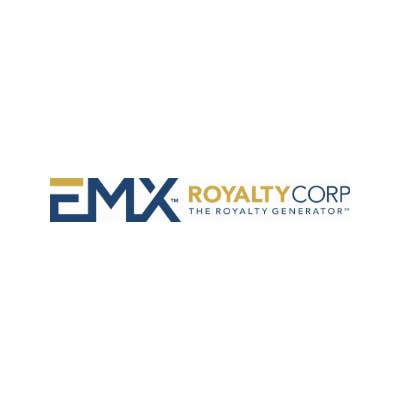
To view the source version of this press release, please visit https://www.newsfilecorp.com/release/199768

